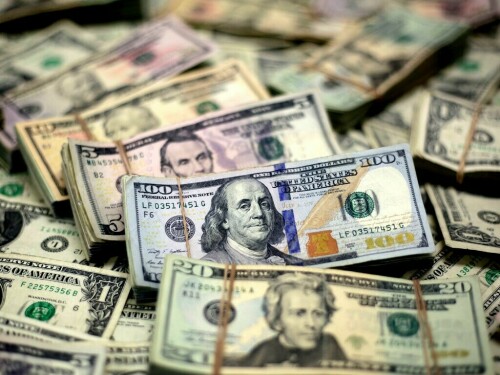Pakistani Rupee Gains Slightly Against US Dollar
The Pakistani rupee experienced a slight increase in value against the US dollar, appreciating by approximately 1% during Thursday’s trading session in the inter-bank market.
As of 9:48 am, the local currency was trading at 280.93 against the US dollar, reflecting an increase of Re0.04 compared to the previous day’s closing rate.
On Wednesday, the rupee concluded trading at 280.97 against the US dollar.
Global Market Influences
On the international stage, the dollar took a pause on Thursday following a sharp rise. This rebound occurred after signals that President Donald Trump was retreating from his intentions to dismiss Federal Reserve Chairman Jerome Powell, and his administration appeared to be considering a more flexible approach to tariffs on China.
After briefly falling below 140 yen on Tuesday, the dollar bounced back from a key support level, reaching 143.25 yen on Thursday.
The dollar’s recovery was further supported by Treasury Secretary Scott Bessent’s statement that the U.S. does not have a specific currency target, made prior to discussions with his Japanese counterpart. Bessent also noted the unsustainable nature of the current trade restrictions between the U.S. and China, while emphasizing that the U.S. would not initiate the reduction of tariffs exceeding 100% on Chinese products.
The dollar has regained some ground after hitting a three-and-a-half-year low of $1.1572 per euro, but saw some selling pressure in Asian trading, stabilizing around $1.1338.
Oil Price Movement
Oil prices, a crucial factor in currency valuations, edged higher on Thursday after a decline of nearly 2% in the prior session. Investors were assessing a possible increase in output by OPEC+ against conflicting tariff indications from the White House and ongoing US-Iran nuclear discussions.
Brent crude futures increased by 8 cents, or 0.12%, to reach $66.20 per barrel by 0505 GMT, while US West Texas Intermediate crude rose by 9 cents, or 0.14%, to $62.36 per barrel.
Prices decreased by 2% in the previous trading session following a report that some OPEC+ members were considering accelerating oil output increases for the second month in June.
ING analysts mentioned that while a risk-on sentiment supported most risk assets, oil lagged due to disagreements within OPEC+.
Kazakhstan, responsible for about 2% of global oil production and a country that has consistently surpassed its quota in the past year, indicated it would prioritize its own national interests over those of OPEC+ when determining production levels.



Comments (0)
No comments yet. Be the first to comment!
Leave a Comment